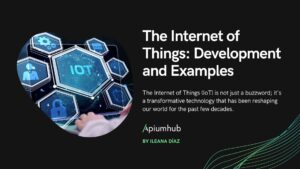Table of Contents
One of the most evident cybersecurity challenges in the current technological ecosystem is that of IT security in IoT devices. As we approach a more interconnected society with more smart objects connected to the cloud, the risks also increase and vulnerabilities that need to be detected and corrected multiply. The Internet of Things (IoT) it is a technological breakthrough that is completely revolutionizing our daily life. More and more devices are connected to the Internet. Today we can collect, store, analyze and manage more data to provide more effective solutions from the management and massive analysis of data and artificial intelligence apps. None of that would be possible if we didn’t have IoT devices to facilitate data gathering and collection. Education, healthcare, the automotive industry, portable devices and a variety of fields are beginning to benefit from the IoT advantages. However, this scenario is also very attractive to cybercriminals, who see in the proliferation of devices and applications a great incentive for their activities. In this article we will show you what types of IoT security issues we can find, some of the most significant threats to IT security in IoT and why it is important to face them in the IT sector.
Types of IT risks in IoT security issues
IoT security issues can be of different nature and occur at different levels.
• Computer attacks: Computer attacks are the most common threat in a cloud environment. They can be Denial of Service (D-DOS) attacks, malware spread in IoT devices, exploits, attacks on the user’s privacy or even modification of the electronic components of the device.
• Software vulnerabilities: Another major security challenge lies in the vulnerabilities of IoT applications and software. These must remain updated, analyzed, tested and configured correctly to prevent security problems, both in platform and backend.
• Data interception: Communications between IoT devices are another level where cybersecurity risks may occur. Session kidnappings, or communication protocols and obtaining network data are some threats to which it is essential to adopt security measures.
To all this, we must add preventive computer security measures that must be adopted against external threats, such as natural disasters and device breaking, in order to always safeguard the user’s information.
Why are IoT devices an attractive target for cybercriminals?
One of the biggest enemies of cybersecurity is overconfidence. And it’s just that IoT devices, regardless of their use, complexity or the degree of information they collect from the user, are an attractive target for cybercriminals. We must not forget that the devices of the Internet of Things collect private information about the behavior of the user in certain areas: financial, health, education…
The possibility of accessing and managing the physical components of an IoT device, such as a security camera or microphone, or sensitive information in the cloud, such as our physical location or our movements, poses a great risk to the privacy of the data or even the security of the user.
Five key security risks and IoT issues
Every company in the IoT sector must ensure the security, privacy and experience of users so that we can really take advantage of the benefits of the Internet of Things. Let’s see some of the main challenges, on a more concrete scale, that we must work on so that devices, interfaces, communications and people can relate more safely.
1.A challenge for data privacy: The Internet of Things represents taking the data collection, storage and analysis mechanisms to a greater scale. There are more and more devices connected to the Internet and there are also more elements that require protection: the device itself, the network, the application or the platform that it uses.
2.Technical vulnerabilities in authentication: The IoT works with devices of different nature that will be connected to the Internet and collect user data in the cloud through the tool itself. One task to do is to work in depth on the authentication mechanisms to ensure the privacy of the user.
3.Human factor: The Internet of Things is a relatively new technological advance. Ignorance of IoT security, both by companies and individual users, also increases the risks of cybersecurity due to lack of experience and the human factor.
4.Data encryption: the transmission of data by non-encrypted means presents a major security problem. Consider also the importance of network security, since the IoT is generally focused on mobile devices of various types and predominantly wireless networks.
5.Complex system: the more devices, people, interactions and interfaces, the more the risk for data security also increases. It means that there is more variety and diversity in the system, so the challenge of managing all points in the network to maximize security also increases.
These are just some of the challenges of extending IoT devices and cloud applications and their security risks.
Conclusion: how to deal with computer threats in IoT devices?
The Internet of Things facilitates our daily life in many areas; it helps us obtain information that nobody collected before, store it, analyze it, make predictions and suggest strategies and techniques in real time that can make our decisions more effective and help us achieve a goal.
In this sense, the existence of devices able to collect more and more information, as well as the use of the cloud for the massive management of data, provide a benefit for society of still unknown dimensions.
IoT technologies are transforming the world today and will continue to do so in the coming years. However, the risks and threats mentioned above are undoubtedly a challenge for companies in the Internet of Things sector that want to provide an efficient, safe and clean service that protects user data.
Did you know the challenges that IoT devices face? How do you think computer security can be improved in a world of interconnected elements? Leave your comments below. Thank you!
If you are interested in cybersecurity or in IoT security issues in general, I highly recommend you to subscribe to Apiumhub’s monthly newsletter.
If you found this article about IoT security issues interesting, you might like…
Deep learning startups & use cases
Artificial Intelligence – in math I trust












One Comment
ai course
I feel extremely thankful that I read this. It is exceptionally useful and especially enlightening and I really took in a ton from it.
IOT Courses